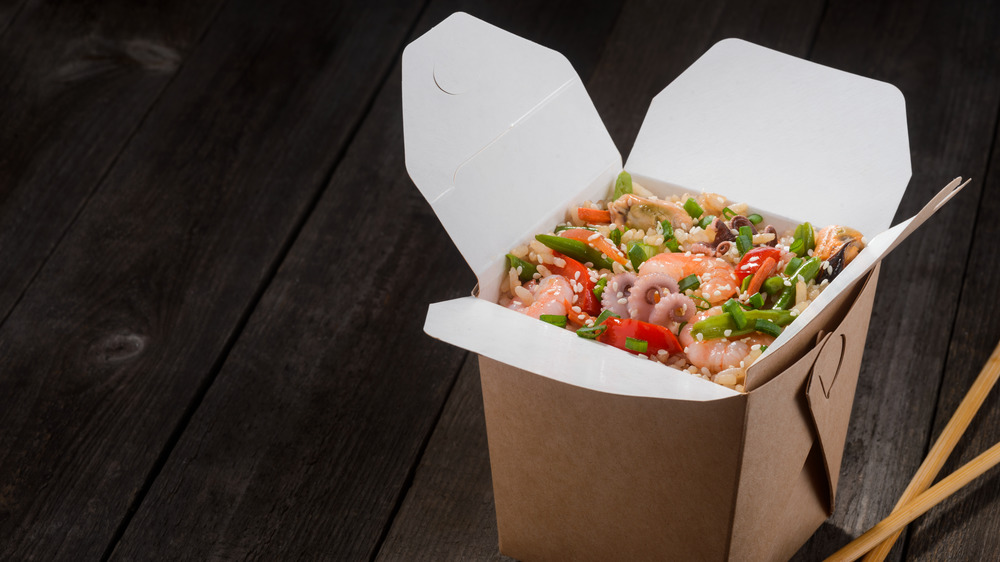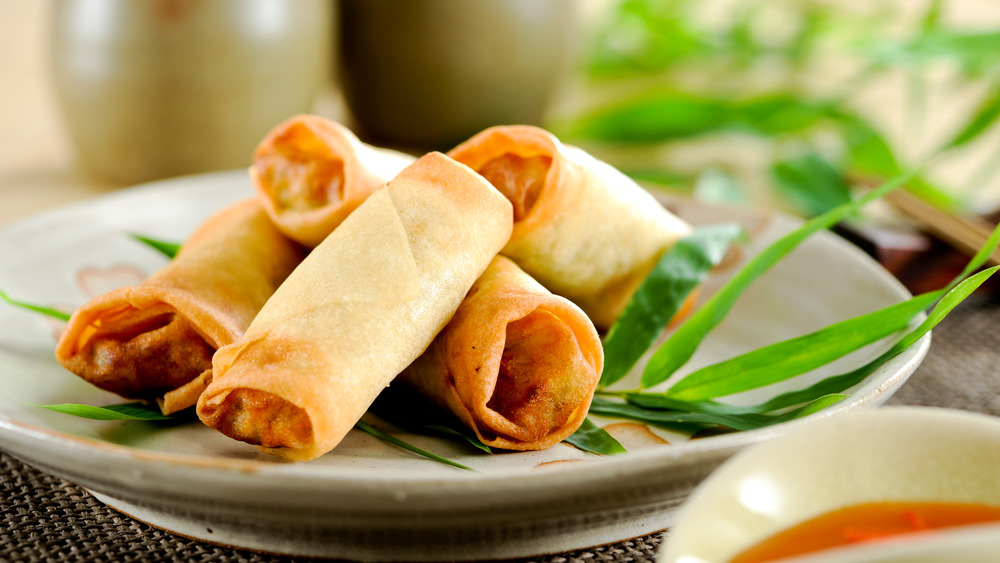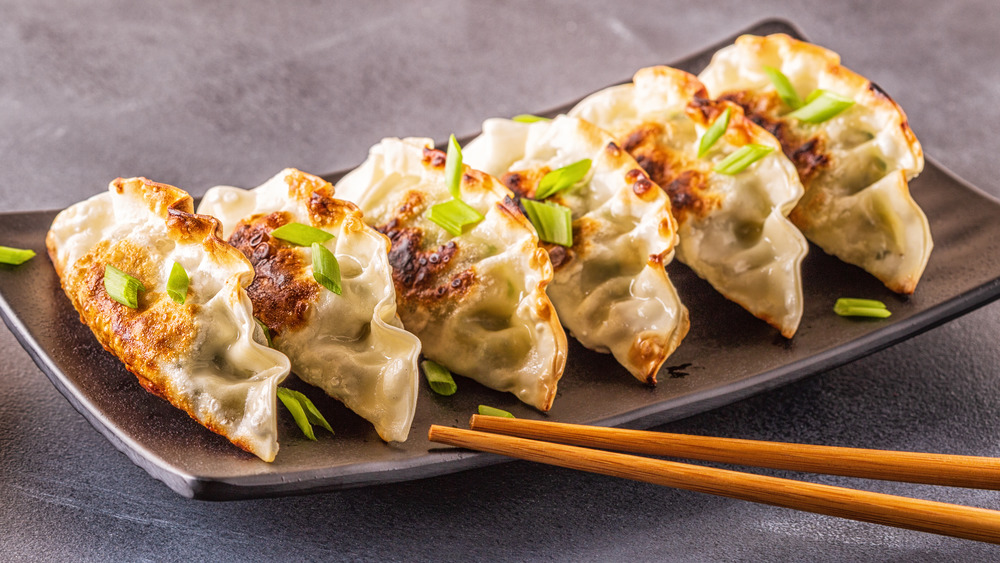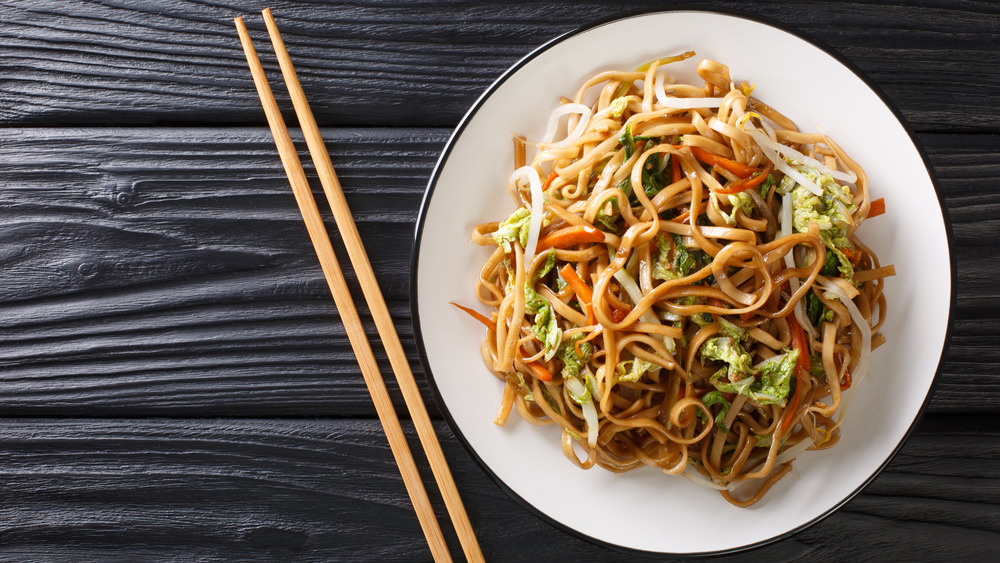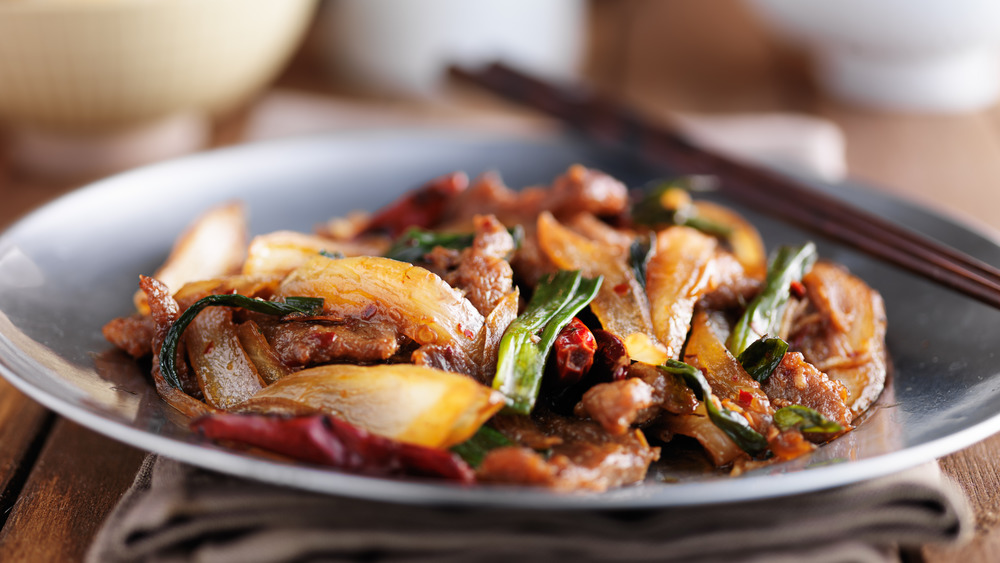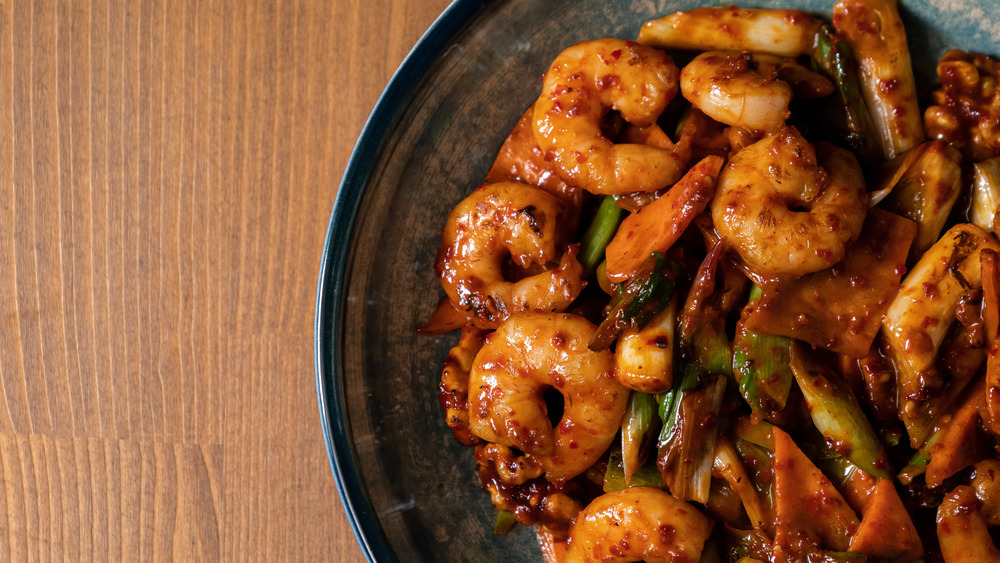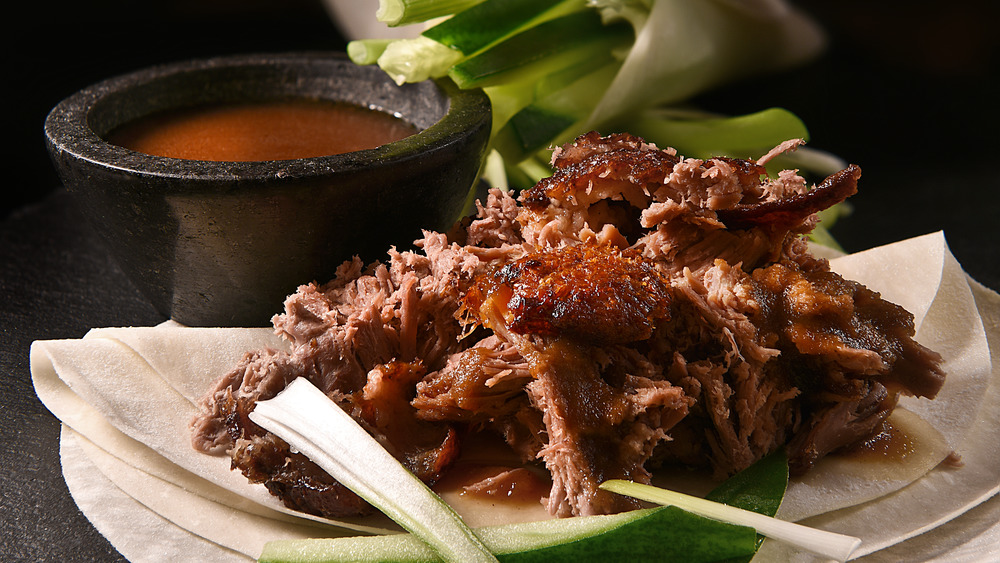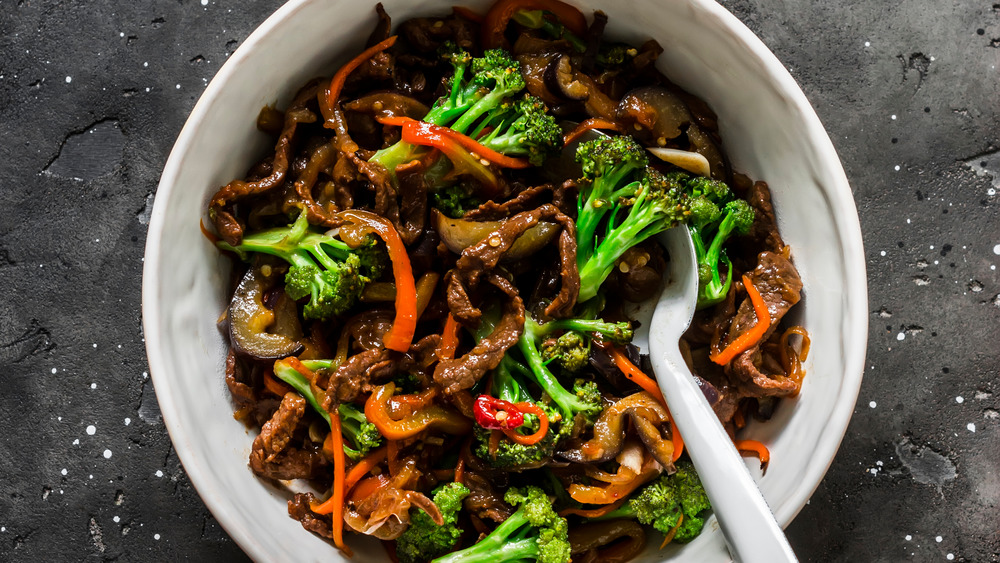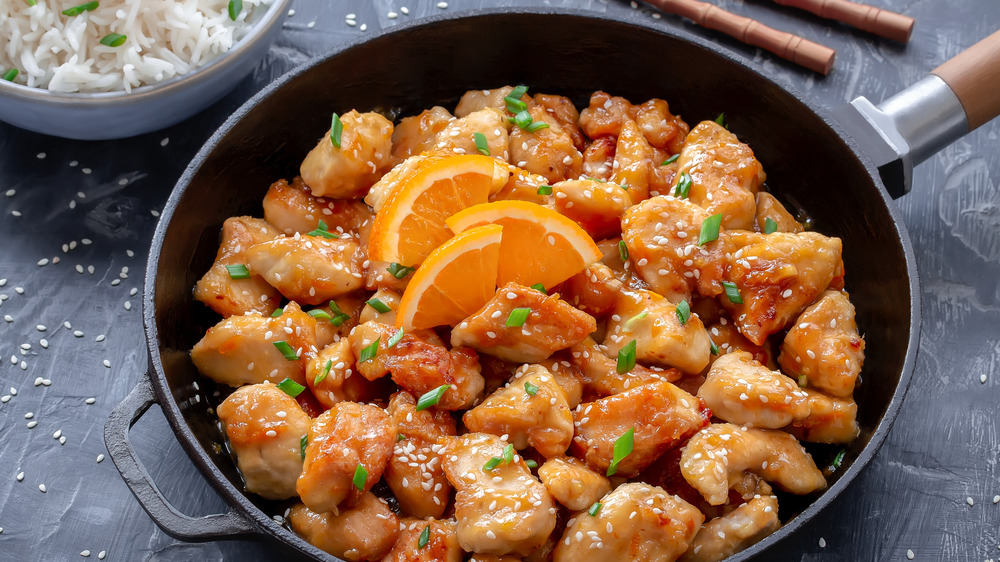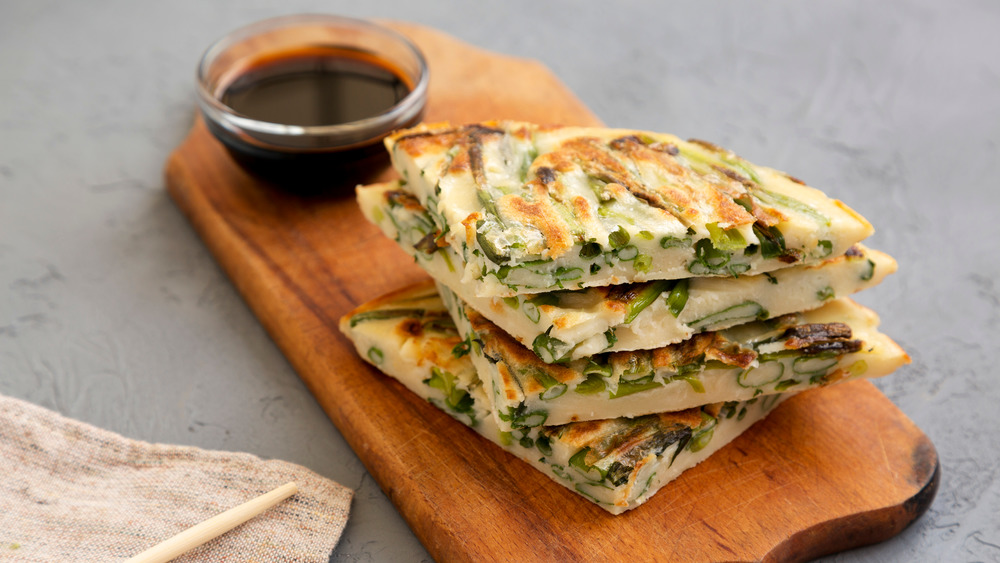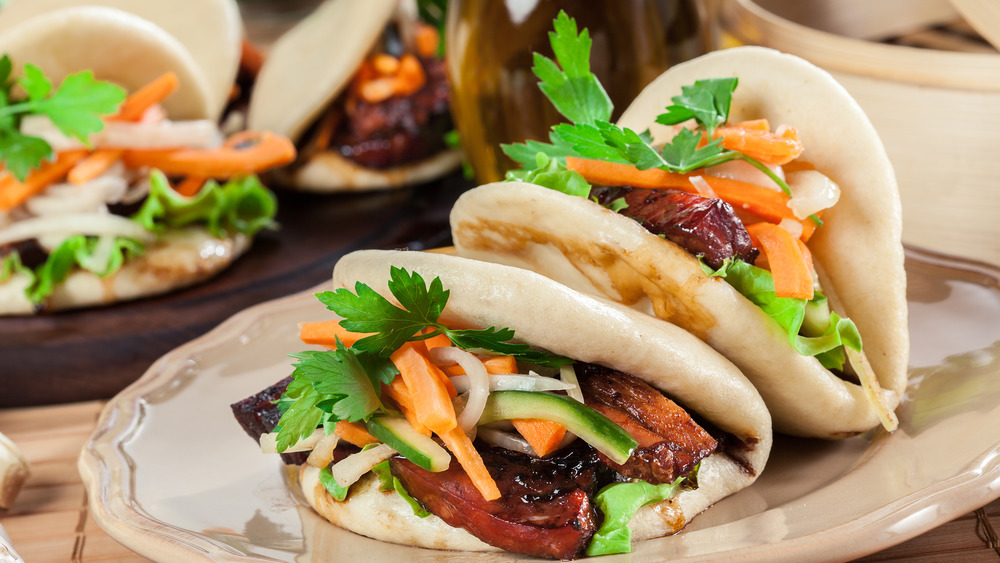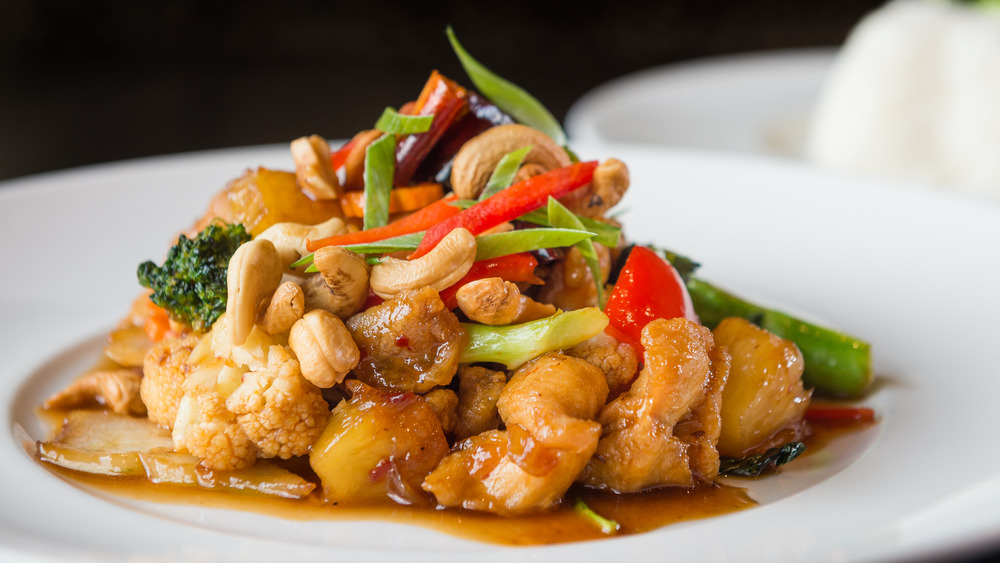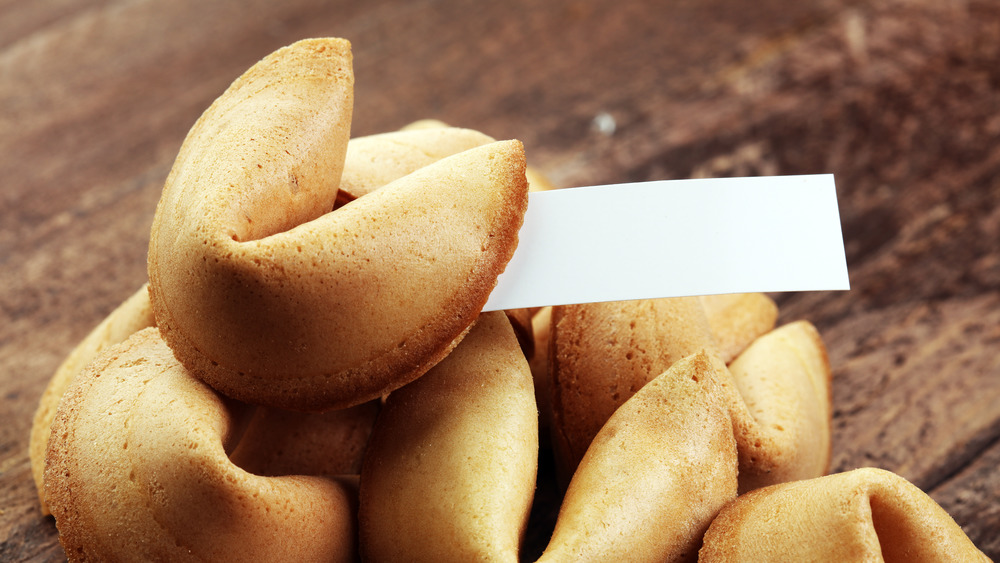The Best Chinese Food Ranked
Whether you're a fan of ordering from your favorite restaurant or cooking a meal from scratch, few cuisines have the mass appeal that Chinese food does. It seems like every small town and massive city has that one Chinese restaurant that outshines the rest, or a family-owned business that boasts authenticity. So whether you prefer chow mein over fried rice or your favorite part of the meal is the fortune cookie at the end, opting for Chinese food is always bound to please.
From tasty small dishes like dumplings and spring rolls to crowd-pleasing entrées like Kung Pao chicken and Mongolian beef, it's hard to go wrong when ordering. But then again, it's hard to know what to choose, as each item on the menu sounds better than the last. So when you're in a bind and want to order one of everything, remember that you're not alone.
We went through some of the most popular Chinese dishes, authentic recipes, and unique favorites to put together a complete list of the best food to choose from.
The very best: Veggie spring rolls are a hard item to beat
Truly no meal is complete without veggie spring rolls — that's just a fact, we don't make up the rules. The flavorful dish is a perfect way to start off your Chinese food experience. The crunchy outer shell, filled to the brim with a mouth-watering combination of veggies, is bound to please even the pickiest of eaters and is most likely a favorite of someone you know.
As noted by The Woks of Life: A Culinary Genealogy, there are actually two different kinds of Chinese spring rolls — the Cantonese version and the Shanghainese version. The most well-known, and therefore the crowd favorite, is the Cantonese version, which features the crispy shell. The spring rolls often consist of a mushroom filling and bamboo shoots, resulting in a slightly crunchy and extra delicious flavor.
If you opt for making the spring rolls yourself, The Woks of Life recommends that you tightly wrap the rolls, but be sure not to overstuff them. You should also use fresh spring roll wrappers if possible — you don't want frozen wrappers if you can avoid it. (No one wants a damp spring roll.) Cook until golden brown and dig in, or if you're anything like us, order them alongside your favorite entrée from your go-to Chinese restaurant. Either way, enjoy.
A close second: No Chinese takeout is complete without dumplings
If you order spring rolls, you have to order dumplings: It's the law. Okay, it definitely isn't, but you can never go wrong with dumplings. Most of us know Chinese dumplings as fried pot stickers, but as noted by China Sichuan Food, there are three different kinds of dumplings that differentiate based on the way they're cooked: boiled, pan-fried, or steamed.
No matter the style, dumplings are widely popular in China and are one of the most commonly eaten foods during Chinese New Year. They're typically served as a side dish or even as a breakfast item (count us in), and spending the time to make dumplings is one of the most important shared family experiences. All family members get involved to make the dumplings together. "The older generation with more experience in making dumplings makes the most of the preparation works including making well flavored dumpling fillings and a dumpling wrapper dough with an appropriate hardness," China Sichuan Food explains. "When the dumpling party begins, someone starts to roll the wrapper and all of the others help to wrap them ... Everyone is enjoying the precious family reunion time and looking forward to the next 'get together' dumpling party."
So next time you order dumplings as part of your Chinese food delivery, not only enjoy the rich flavors but remember that dumplings represent an important part of Chinese culture.
Yummy but not authentic: chow mein
Chinese food was brought to the United States and given new twists, spins, and completely new dishes. Chow mein is one of them, which may come as a surprise. While it is a go-to dish, noodles often served with veggies and topped with sesame seeds, it's not an authentic dish to China but rather a spin on stir fry noodles. Leave it to The New Yorker to shed some light on the situation.
"Chow mein is a bastardized form of an authentic dish called, in Mandarin, 'ch'ao mien,' or 'stir-fried noodles,'" the magazine reported. "The authentic dish is prepared by frying boiled noodles with a few bits of meat and vegetables. Those crisp noodles served in this country are not found in China." We'll give you a minute to collect yourself.
New dishes began to pop up in Chinese restaurants and cuisines as immigrants were making ends meet in the United States. A legendary Chinese cook, living in a mining camp, "found himself shorthanded one day and gave his customers a mishmash of whatever was lying around." That's how many dishes, like chop suey, were created. It's true that desperate times call for desperate measures, and many chow mein eaters out there should feel blessed that such a creation was invented. So chow mein gets ranked third on our list — we had to deduct points on the "non-authentic" front.
A solid option: Mongolian beef
If there is a Chinese entrée that's bound to please everyone (vegetarians excluded, sorry), it's Mongolian beef. The tried-and-true dish is a delicious combination of lean beef and veggies. Not only is it always good when ordered in, but you can make it yourself fairly easily. One such recipe that is great to follow is this one from Tastes Better From Scratch. The combination of beef, green onions, garlic, and ginger sauce is to die for. Serve it over rice or with a small dish of your choice, and you'll be the family favorite.
As noted by China Sichuan Food, some were led to believe that Mongolian beef was another American-produced, bastardized version of Chinese food, but that's not the case. Mongolian beef is a real Chinese dish, but confusion kicked in because in China, the dish is referred to by a different name. "Stir-frying meat with scallion is a common cooking method [in] China," China Sichuan Food states. "The name seems to show that the beef dish is Mongolian style. In fact, it is a dish originated from Chinese Shangdong province or Xingjiang province." So not only does Mongolian beef get a high list ranking because of its delicious taste but also in part due to its authentic roots.
Simple but effective: Kung Pao shrimp
One of the cooking methods used in Chinese cuisine is stir-frying. As you may have seen in authentic Chinese restaurants, chefs use extremely hot, deep woks to cook a variety of dishes, resulting in the mouth-watering entrées we all love. One such dish is Kung Pao shrimp, or really any other Kung Pao dish (think chicken). It's a classic meal from Sichuan cuisine, and as noted by Red House Spice, it's pretty easy to make at home.
If opting for the made-from-scratch method, however, you have to use a very specific style of cooking: Huá Chǎo. As previously stated, the woks used to cook many Chinese dishes are heated at incredibly high temperatures. As such, the Huá Chǎo method consists of preparing everything you need before putting the wok on the heat and getting started with the cooking. So make sure that your shrimp is peeled and deveined, that you have all your soy sauces and vinegars measured out for the sauce, that your chilis are halved and deseeded, and that all the veggies are prepared.
Once you get to the cooking, everything moves fairly quickly. Your protein of choice, shrimp in this situation, should stay tender, and your veggies should retain a little bit of a crunch. In the traditional version of the dish, the peanuts included are deep-fried. (Sounds great.) So make sure to prepare, cook quickly, and don't burn yourself.
Some love it, some don't: Peking duck is great depending on the person
Duck isn't for everyone, but if it's something that you're down to try, then Peking duck is the dish for you. As noted by The New York Times' cooking section, peking duck is "one of the most famous and popular Chinese dishes" because of its rich flavors and tasty toppings. The Times noted that the method to make Peking duck, traditionally, includes a lot of steps — so much so that it's known to take up to three days to prepare. But if you're feeling adventurous and want to try to make the dish yourself, the cooking section offers a simplified version.
One of the best things about Peking duck is the crispy, golden brown skin. To recreate this, you have to air-dry the duck overnight and then roast it the following day. But the trick is to roast the bird vertically, not horizontally, in order to achieve even and thorough cooking. To top off the glorious dish, the recipe puts together a honey and spice glaze to be spread all over the delicious duck — if your mouth isn't watering, then consider it a sign not to try this dish.
The Peking duck is then served in the following way: Wrap the duck in a homemade Chinese tortilla and top it with chopped scallions and thinly sliced cucumber. Add your sauce, and call it dinner. We're hungry just thinking about it.
A little boring but always reliable: beef and broccoli stir fry
If you were a picky eater as a kid, your parents probably pushed you to order the beef and broccoli stir fry when eating at a Chinese restaurant. The crowd-pleasing dish is simplistic in its seasoning and flavors, and as most former picky kids will tell you, it's still a favorite. But as noted by Red House Spice, beef and broccoli stir fry is a classic Cantonese dish, and although the authentic version varies slightly from the entrée most of us came to love, it's just as tasty. So if you're craving the option but don't want to run to Panda Express to get the bastardized version, here's what you need to know about authentic beef and broccoli stir fry.
Instead of opting for the boring broccoli that you get in a plastic bag in the grocery store, the authentic dish calls for Chinese broccoli, a much darker green known for its crunchy stems. As noted by Red House Spice, "it's not suitable for eating raw but tastes wonderful when stir-fried either on its own or with some well-seasoned meat." Perfect for this dish. The veggie is known as "Gai lan or Kai-lan in Cantonese or Jie Lan in Mandarin" and is sometimes referred to as Chinese kale, given that it has a stronger, earthier taste than classic broccoli. So if you're down to revamp this golden oldie of a recipe, try making the authentic version at home.
Negative points for lack of authenticity: orange chicken
Picture this. It's 2008. Your mom has dropped you and your middle school-aged friends off at the local mall. You have $20 in your pocket, and instead of getting the new pair of earrings from Claire's you've had your eye on, you instead are drawn to the smell of the Panda Express stall in the food court. Your palette is limited at best, so what do you get? White rice and orange chicken, a classic.
Fast-forward to today, and orange chicken is still a fan favorite in the United States. Its sweet and crispy exterior is a perfect match for the savory chicken found on the inside of every bite. So why is it so far down the list of best Chinese food? Because the dish is not an authentic Chinese recipe. As noted by Insider, there is a dish China called orange chicken, but it's not the slightly sticky and very sweet option that we've come to love in the United States.
If you want to make the Panda Express favorite at home, this recipe has your back. It even states that the chicken will be full of "flavors reminiscent of the orange chicken from a popular restaurant in the mall." How nostalgic.
Yummy, but eat them when they're hot: scallion pancakes
The small dishes boasted in Chinese cuisine are really so good — dumplings, rolls, chicken skewers, the list goes on. And another crowd favorite that is sure to please everyone is scallion pancakes. The slightly crispy combination of onion and spices is sometimes too good to be true. Add a dipping sauce, and all bets are off. As noted by China Sichuan Food, scallion pancakes are also called green onion pancakes, or Congyoubing, and are one of the most famous Chinese street foods. It's a very traditional dish, and although some might order a plate of them as an appetizer, people in China often opt for the dish as a breakfast item.
The culinary website also notes that there are different kinds of scallion pancakes in the varying areas of China. "In northern provinces, scallion pancake[s] [are] thinner, chewy and with less oil," China Sichuan Food notes. "In Southern China, for example, Shanghai, scallion pancakes are thicker and fried with a larger amount of oil and create a even more crispy shell and softer inner part." Both sound excellent. So why is this traditional recipe and fan favorite lower on the ranking? Because in our experience, you have to be prepared to eat them as soon as they're ready. No one wants a cold, chewy scallion pancake.
Not everyone's favorite, but an okay option: bao buns
Chinese cuisine has amazing dishes and a wide variety of options. There are dishes for all kinds of eaters — picky, vegetarian, spicy food lovers, and everything in between. But some might have to slap on their adventurous cap when trying bao buns, a yummy but slightly intimidating Chinese dish. As noted by Red House Spice, bao buns are a fluffy steamed bun most often filled with pork belly and topped with fermented vegetables and peanuts — you see what we mean about adventurous.
Known as gua bao, the sandwich-like option originated in Taiwan and is very popular on the street food scene. So if you're feeling up to a new recipe, or if bao buns are one of your favorites, you can opt to make the dish at home. The guidance from the masterminds of Red House Spice is very clear with their recommendations — braise the pork belly before you do anything else, let the dough rest for 30 minutes, prepare all your other fillings (such as peanuts, kimchi, chili, etc.), and then steam the buns. This methodical approach will ensure that your meat is perfectly ready to eat once the buns are steamed.
If you want to impress your friends, you can make the buns ahead of time, and the braised pork belly can be stored in the freezer. Just make sure to proof your dough for long enough. No one wants a deflated bao bun.
A slightly overdone classic: cashew chicken
There are some dishes that you just know will be on every Chinese restaurant's menu: Mongolian beef, chow mein, and a classic, cashew chicken. A go-to option for so many, cashew chicken is a golden oldie and is a great choice for a number of reasons. As noted by the Omnivore's Cookbook, cashew chicken is a staple for many Chinese families because of its well-rounded ingredients — it is "nutritious, balanced with veggies and grains, bursting with flavor, and beautiful to the eyes." So it's no surprise that cashew chicken is a favorite, as it checks off every item on the list.
What makes the dish so tasty is the marinated chicken — the meat is left to soak in a combination of oyster sauce, vinegar, soy sauce, and a touch of sugar, garlic, and ginger. (We hope your stomach is doing okay — ours are definitely growling.) The classic dish is then topped off with peppers and cashews and is often served with steamed rice. The cookbook notes that the authentic Chinese recipe opts for chicken breast, but you can use chicken thighs if you're searching for richer flavor. Don't mind us as we raid the pantry to make sure we have everything we need to whip up this recipe tonight for dinner.
Zero points for cuisine authenticity: fortune cookie
It seems like a Chinese meal cannot be complete without a fortune cookie. The snap of the shell and the note inside make the cookie feel like as much of an experience as a dessert, but it's at the bottom of the ranking because of its lack of authenticity. You read that correctly — the fortune cookie is not authentic to Chinese cuisine and is a byproduct of how Chinese food came to the United States.
As noted by Vice, Chinese restaurateurs in the U.S. were looking for a way to appeal to the masses, and given the painful journeys that many Asian immigrants went on, the cookie was seen as a way to lure American patrons in without making them feel uncomfortable. The challenge was to create "a cuisine sufficiently Westernised to not offend the American palate, but different enough to remain 'exotic.'" The fortune cookie grew in popularity and found itself at the center of World War II, as many soldiers arrived in large cities with Chinatowns, including San Francisco and Los Angeles.
To this day, the cookie is served at the end of the meal — but many might not know the painful history it holds. As noted by Red House Spice, some people from China did not even know about the cookie until they came to the United States. Just something to remember next time you crack open the shell to read your fortune.
